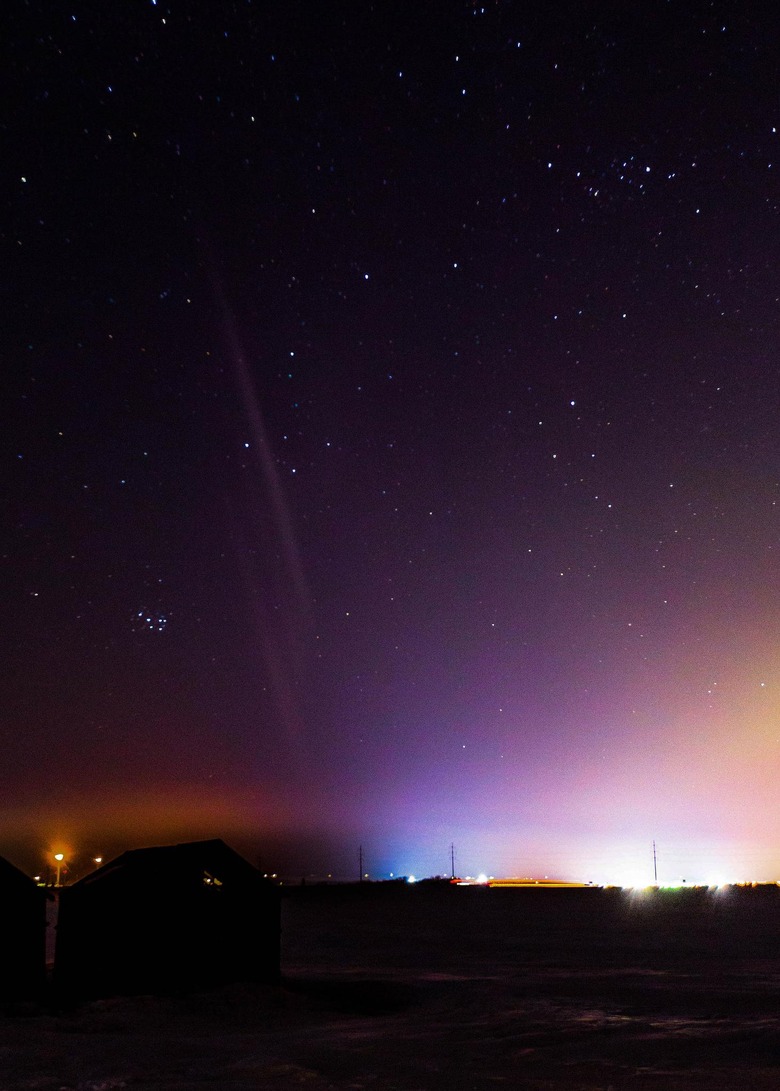Sky Surprise: These Ethereal Northern Lights Are No Aurora
A mesmerizing natural light show long considered to be another aurora is actually something completely unknown, scientists have concluded, after digging into the oddly-named STEVE phenomenon. The glowing ribbons of white and purple light had been observed in Canada's night sky for many years, with the unsurprising assumption that it was just another type of aurora.
While the aurora borealis – also known as Northern Lights or Polar Lights – is often considered a single event, in fact these natural light displays happen all across high-latitude regions around the Arctic and Antarctic. They occur when the planet's magnetosphere has been disturbed by solar wind, forcing electrons and protons in those winds and in magnetospheric plasma into the upper atmosphere.
There, their energy is lost, giving out light in different colors as a result. The pattern – which can vary from thin streamers to sky-spanning hazes and waves – depends on the rate of acceleration of the precipitating particles.

STEVE, though, proved to be something different. For a start, sightings are relatively rare: while traditional auroras can typically be seen on a nightly basis, STEVE only showed up a few times per year. It also appears lower to the equator.
First spotted by photographers, the name came from 2006 movie "Over the Hedge." That then was retroactively converted into an acronym: Strong Thermal Emission Velocity Enhancement.
When scientists began investigating STEVE, the early assumptions proved unfounded. Theories that the light could have been the result of excited protons fell flat, because photographers should have needed special optics in order to capture photos of them. Data from satellites and ground observatories, recorded at the time of STEVE sightings, suggested fast-moving ions and super-hot electrons were also passing through the ionosphere while the light show was taking place. However, it's unclear if they were responsible for those shows.
Now, a new study by researchers at the University of Calgary in Canada, published this week, digs further into STEVE – and comes away with new uncertainties. "Our main conclusion is that STEVE is not an aurora," Bea Gallardo-Lacourt, lead author on the research, says. "So right now, we know very little about it. And that's the cool thing, because this has been known by photographers for decades. But for the scientists, it's completely unknown."
Using images from ground-based cameras captured during a 2008 STEVE sighting, paired with data from the NOAA Polar Orbiting Environmental Satellite 17 which coincidentally was overhead, the activity of charged particles at the time could be examined. In fact, there were no charged particles reaching the ionosphere during that sighting, suggesting a completely different mechanism is responsible.
In fact, rather than an aurora, we should be calling STEVE a "skyglow," the team suggests. Next will come further research into ions and electrons in the ionosphere, to figure out whether they're responsible for the lights or if something higher in the atmosphere is at work.
IMAGE Ryan Sault; Chris Ratzlaff
